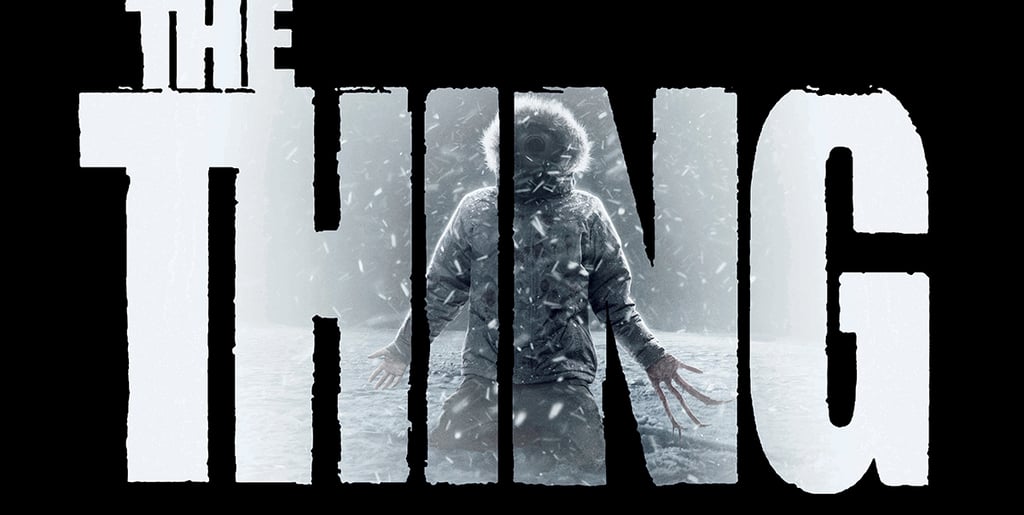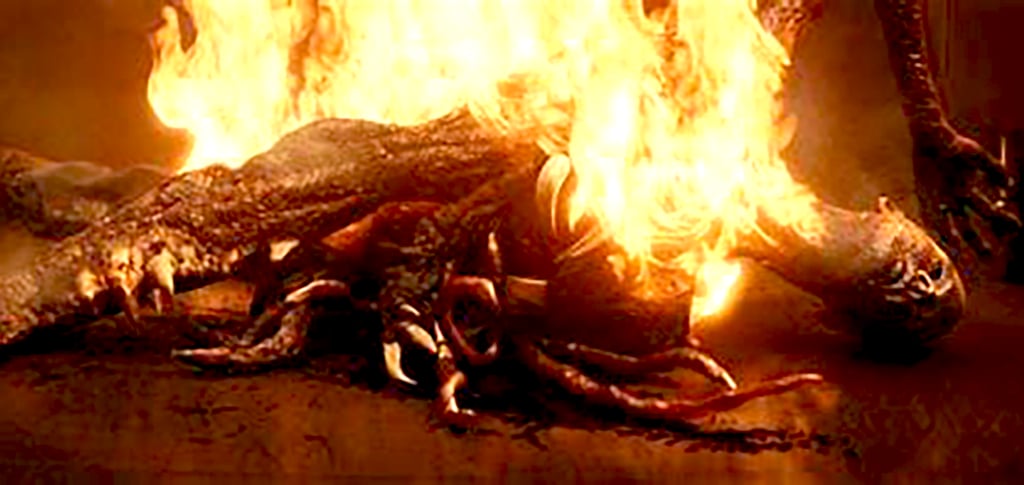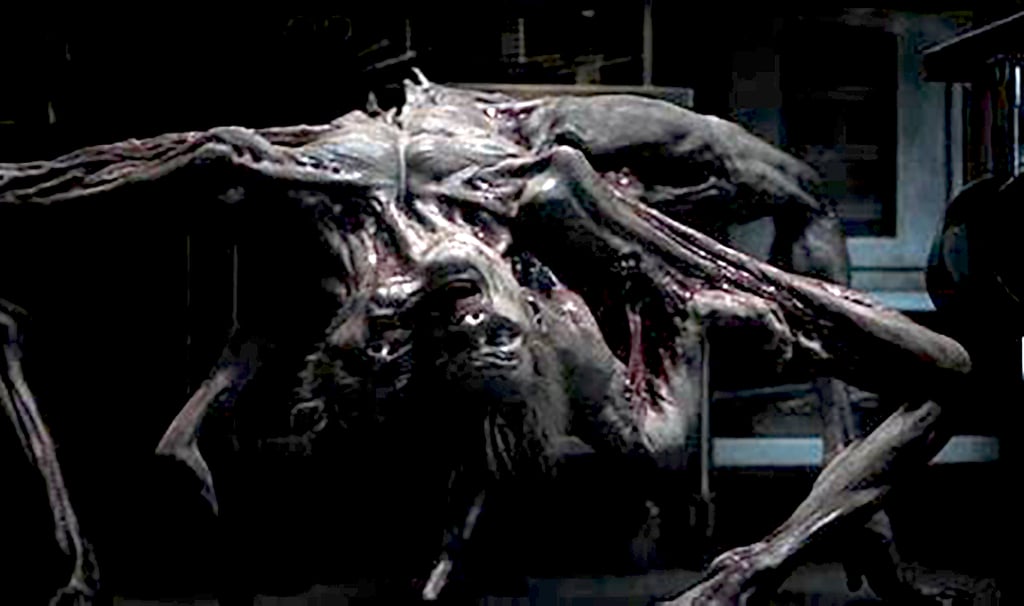Do you love dark cinema like we do?
The Thing vs. The Thing Part Two
After the success of the 1951 film The Thing from Another World, two remakes followed: John Carpenter's The Thing in 1982 and Matthijs van Heijningen Jr.'s prequel The Thing in 2011. Which is better? Part Two
HORROR/SCIENCE FICTION
written by Barry Atkinson
5/26/20258 min read


However, as the old saying goes, you cannot keep a good monster down. In 2009, Universal decided to produce a prequel to The Thing after receiving enthusiastic reports on a possible project from writer Eric Heisserer, producers Marc Abraham and Eric Newman (who had worked on 2004’s Dawn of the Dead), and Dutch film producer/director Matthijs van Heijningen, Jr. Heisserer, taking over script duties from Ronald D. Moore, made it quite clear that this wasn’t going to be a remake of the John Carpenter movie; rather, it would be a companion piece, a backstory relating how the Norwegian base stumbled across the spaceship and the events that occurred once the animal had broken free of its icy tomb. It would end at the point where Carpenter’s movie began, that is, the helicopter pursuing the dog/Thing across the ice. It would be fascinating, Heisserer went on, to account for the bloodied axe embedded in the door and how it came to be there. The camp personnel would all be scientists instead of blue-collar workers, Norwegian and Danish actors would be hired to add authenticity (subtitles would be added), a female lead would be introduced, as in Alien, there would be no big-name stars (apart from Joel Edgerton), and the Thing itself was to be exhibited “in its purest form.” Whether this was the creature’s original form or that of another being(s) the Thing had absorbed and assimilated would be open to conjecture. Creature effects would incorporate a mix of animatronics, hydraulics, puppetry, and a dash of CGI, but wouldn’t be overdone as in the 1982 version: “Less is more,” stated the director, quite wisely, taking his cue from Alien that showed very little of its monster to superb dramatic effect. Composer Marco Beltrami openly admitted that he took his inspiration from Ennio Morricone’s music featured in Carpenter’s production. Many fans still believe that Morricone scored the prequel with similar somber, brooding tones. A considerable amount of thought, care, and attention went into the production by all concerned; the two previous films were used as source references but not copied; this was to be a brand-new animal for a brand-new audience.
Filming commenced in Canada in 2010 on a budget of $ 38 million, and upon viewing the rushes, Universal executives thought that the production had a dated air, “like an ’80s movie.” CGI, therefore, replaced many of the film’s mechanical effects, van Heijningen later voicing his opinion that, in hindsight, this was an error on Universal’s part. There was to be an actual mummified pilot of the saucer, the Thing being a biological specimen that had been collected on an interplanetary expedition, the craft deliberately crashing to destroy the creature, but this was vetoed (the footage was cut but can be seen online), to be replaced by a computerized display of shifting cubes emitting the signal that had drawn the Norwegians to the spot in the first place. The Thing, clocking in at 103 minutes, was released in the United States in October 2011 and in the UK in November 2011, and wasn’t a total success, earning a worldwide gross of $31,000,000. I caught it at The Lighthouse cinema in Newquay. I was suitably impressed, unlike most critics who labeled it “an outright disappointment” and “a slave to the far superior John Carpenter version.” Others were more positive: “Full of chills and thrills and terrific creature effects,” wrote one, while Christopher Orr of The Atlantic said that “van Heijningen has managed his balancing act about as well as could be hoped … in our age of steady knockoffs, retreads, and loosely branded money grabs, The Thing stands out as a competent, entertainment capably executed if not particularly inspired.” Leonard Malting awards the movie two stars (one half more than Carpenter’s effort), commenting, “it isn’t completely unsuccessful, but the plentiful CGI visual effects can’t compare to the graphic horrors of the ’82 movie.”
In 2011, did the world of cinema need another Thing? Millennials now make up most of those who go to a cinema to see what. In 2010/2011, the circuits were awash with never-ending Super-Hero blockbusters, the Mission Impossible and Planet of the Apes franchises, Disney movies, crime thrillers, Rom-Coms, and the ubiquitous Harry Potter. Most were rated PG, 12, or 12A. A few horror offerings (The Wolfman; Insidious) popped up here and there, but no adult sci-fi fodder like Alien, The Thing, or Predator. Times and trends had changed drastically; the older generation was perhaps interested in seeing what this new Thing (15 rated) was like, having caught the two older ones years back, but the youngsters? No! I recall seeing one self-proclaimed “film fan” on TV in 2020, loftily stating that he had never bothered with any movie made before 1999, the year he was born. That was a shameful admission! So, the spanking new version of The Thing never stood a chance at the box office. It was an anachronism in an era where family-oriented pictures dominated, a throwback in many ways to the 1980s and beyond. I now look upon the picture as a B movie belonging to the late 1950s/early 1960s, a fantastic period in fantasy cinema, and being more B movie in presentation, after several viewings, I enjoy it far more than the 1982 film during my teenage years, I was brought up on a diet of B pictures. Here’s why I choose van Heijningen’s Thing over Carpenter’s Thing.
The pre-credits sequence features a snowcat traversing the limitless Antarctic wastes, the driver homing in on a signal of unknown origin— a distress call? “Stop! We’re close. We’re right on top of it,” says Jan Gunnar Røise, and then the vehicle plummets through the ice, wedging itself in the walls of a crevasse. The three men stare at a vast, saucer-shaped craft before the fiery title lettering flames through the screen. Paleontologist Mary Elizabeth Winstead, busy performing an autopsy on the frozen carcass of a mammoth, is recruited by the arrogant leader of alien research, Ulrich Thomsen, to investigate “a structure and a specimen” discovered in Antarctica near the Norwegian geological research station of Thule. A short distance from the station, deep inside an ice cliff, Winstead and fellow team members gaze in awe at a spaceship buried beneath the cliff for 100,000 years in a vast cavern. Outside, lying under the ice is a “survivor,” and we can determine its shape and complex body mass: three large claws are on display, along with ribs, feelers, tentacles, and mandibles. This form is sustained throughout the movie, allowing the audience to recognize what this alien resembles and associate with it (hats off to director van Heijningen for sticking to his guns). The specimen is returned to base in a six-foot by 12-foot ice block. Winstead, against her wishes, extracts a tissue sample and, under the microscope, notes the alien cells cloning the human ones. The crew celebrates their find with singing and drinking, as helicopter pilot Adewale Akinnuoye-Agbaje wanders into the room that houses the ice block, staring at the rather frightening, dark bulk of the Thing in its steadily melting prison, for a chilling (in more ways than one) few moments. In the 24th minute, the Thing erupts out of the ice. “It broke out! The friggin’ thing’s alive!” yells the pilot, the men forming search parties, Jo Adrian Haavind, the second victim after a dog, is hauled into the monster’s mouth before flamethrowers blast the creature. In the lab, the charred remains (the beast resembles a giant crustacean, with its vast crab-like legs, feelers, and tentacles) are opened, Haavind’s half-digested body jammed inside its guts. Winstead discovers a titanium plate that Haavind wore, proof that the Thing cannot absorb inanimate objects.
So far, so good. This new Thing has a swiftness of narrative flow (it doesn’t drag for a second), a beguiling monster you can relate to, and a good sense of dread. The effects are admittedly macabre but not over-the-top. We then follow the same route as in the Carpenter version, with Winstead, aided by pilot Joel Edgerton, trying to determine who is human and who isn’t. Dental fillings play a role, as they are rejected by the alien when assimilating humans. One by one, the scientists are reduced in number or imitated (including Thomsen) by the scuttling, flesh-eating alien (“It could be any one of us. It’s like a virus; we isolate it and kill it”), the “body on fire” scene again borrowed from the 1951 original (as did Carpenter). The bloodied axe embedded in the wall is explained (Edgerton aimed it at a baby offshoot of Thing). Still, the frozen corpse with its throat cut isn’t the only body that is seen (in an extended version, you watch as radio operator Jonathan Lloyd Walker walks into his room and slashes his wrist and throat rather than be taken over by the alien). The exciting climax sees Winstead and Edgerton at the site of the alien ship; Winstead tosses a grenade into the maw of the Thomsen-Thing as it attacks her, the ship’s reactivated engines closing. She must destroy Edgerton as he has been taken over (she’s noticed that his earring is missing). Clambering into a snowcat, the paleontologist drives off into the snowy night, but to where? This isn’t made clear; it's undoubtedly a mistake here.
The following day, a chopper arrives at the wrecked, burning Thule base, the pilot viewing with alarm and disgust burnt, twisted remains containing two distorted heads. As a husky bursts out of the building, its owner, Jørgan Langhelle, orders the helicopter pilot to give chase and shoot it dead (“That’s no dog!”), The film ends precisely at the juncture where Carpenter’s movie kicks off. This is good news for fans, as the two movies neatly segue into one another to form a 212-minute experience that appeases all those with the stamina to sit through it all in one marathon session.
Perhaps The Thing could have benefitted from a more substantial male lead, and Winstead, although spikey in attitude, is undoubtedly no Sigourney Weaver; still, the actors play their roles convincingly enough, the monster is realistically executed and doesn’t alter appearance too much, you get to see the outside and inside of the spaceship, and the well-photographed chain of events proceeds at a lot quicker pace and is slicker than in the 1982 picture, providing enough thrills and suspense, not to mention sharper creature action, to satisfy aficionados of a certain age—and there is no slackness in the dense plot either. Whereas Carpenter’s Thing is a glossy A movie with faults that can lead to restless bums on seats, van Heijningen’s more rounded, more complete, and vastly underrated Thing represents a superior, lower-key, B movie that has a lot going for it if, like myself, you are a lover of old-fashioned sci-fi horror fodder without the need for tons of gore and foul language thrown at you. It scores highly on the enjoyment factor and warrants repeated viewings; for me, Matthijs van Heijningen’s The Thing beats John Carpenter’s The Thing hands down. Note: Whether or not a proposed 2024 reboot of The Thing by Blumhouse Pictures, which will stick even more closely to John Campbell’s unedited Frozen Hell, will trump either of these two remains to be seen. Only time will tell.




AFTER THE THING CONSUMES A FEMALE, THE CREATURE IS BURNED.
AFTER THE THING ABSORBS TWO MEN, THE CREATURE FLIPS OVER AND WALKS LIKE A SPIDER.
Get in touch
garysvehla509@gmail.com


